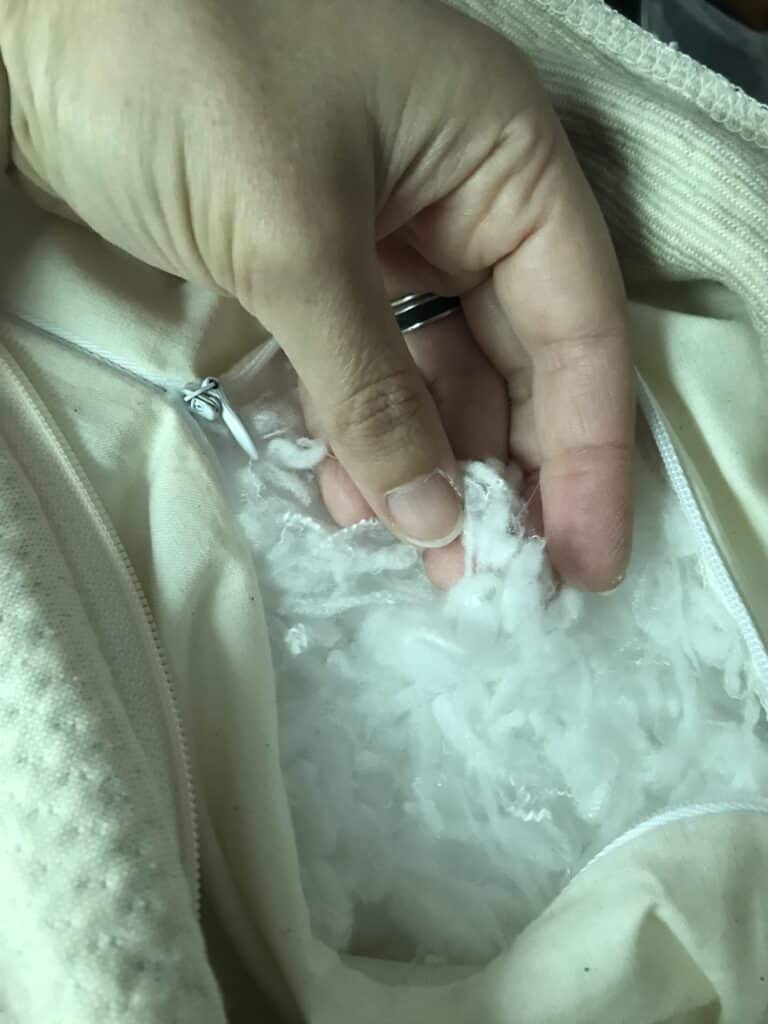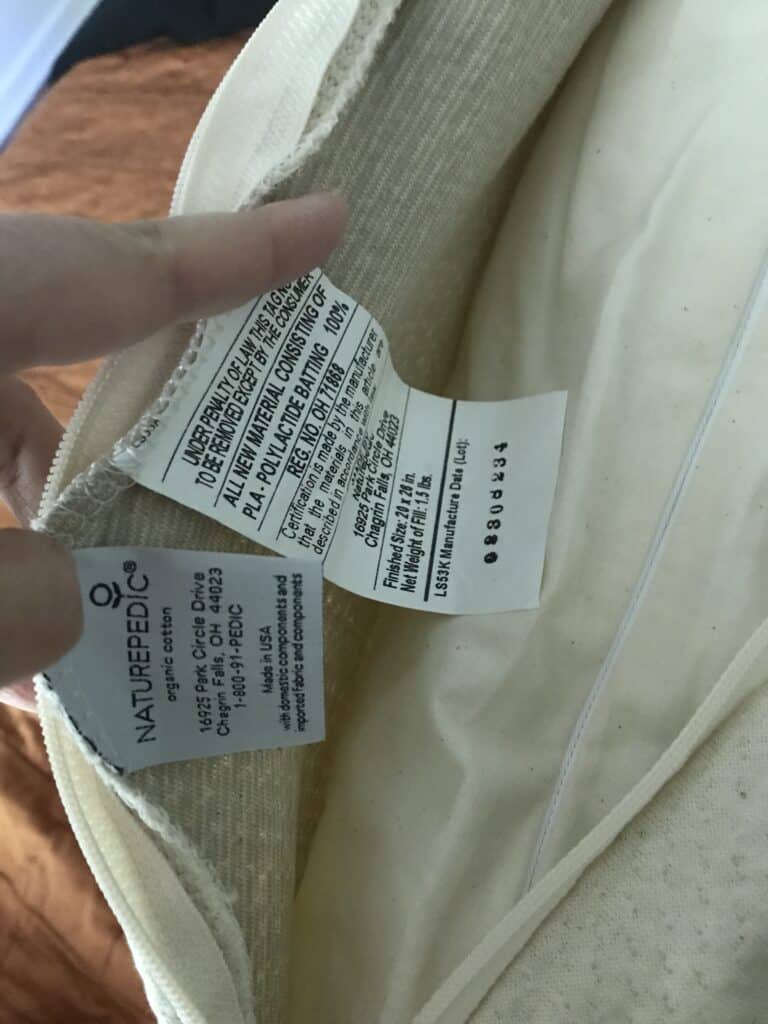PLA is one of those tricky materials that sounds scarier than it actually is. This bioplastic has become popular with bedding companies, for pillows and mattresses, but is PLA non-toxic? Here’s the lowdown on this lofty material.
Table of Contents
A reader wrote in to ask us about PLA, which we had mentioned in our comparison of two mattresses. We figured, if Lewis was curious about PLA, a lot of other folks would be too.
Here’s the question, which I’ve edited slightly for brevity.
Hi,
I see that Leigh Matthews’ recent review of Naturepedic mattresses versus Essentia mentions that Naturepedic uses PLA or Polylactic Acid in its mattresses. I recently purchased a pillow from Naturepedic that has PLA in it, too. I wonder if she could tell me about the toxicity of PLA as it is not really an organic or natural product, even though Naturepedic says it is derived from sugar.
How safe is PLA and what is its toxicity if it has any?
Was it a mistake to buy a pillow from Naturepedic? I purchased the 2-in-1 Naturepedic shredded latex pillow that according to Naturepedic “has PLA plant-based filling on the inside quilt side.”
Should I return it?
I appreciate any help or advice you can provide.
LEWIS
LeafScore reader
Thanks for the great question, Lewis!
The quick answer is, no, don’t return the pillow!
The Naturepedic PLA and natural latex pillow is a great choice for a non-toxic, mostly natural pillow and is, in fact, one I have at home and love. It is GOTS, GOLS, and MadeSafe certified, meaning it doesn’t contain anything that will harm your health or the planet. It’s also super comfortable and easy to adjust the fill to meet your needs.
Now for the longer answer. Buckle in.
What is PLA in bedding?

Polylactic acid (PLA) is a biodegradable and bio-based plastic. It is made using primarily renewable resources, such as:
- Corn starch
- Cassava roots
- Sugarcane.
These days, you’ll find PLA in a variety of consumer products, including bedding and other textiles, packaging, and even for 3D printing.
You may even encounter PLA in some medical applications, such as sutures and implants. This is because PLA is biocompatible, meaning it is generally safe for contact with the human body under certain conditions.
Is PLA toxic?
PLA usually isn’t toxic. However, this entirely depends on the kind of PLA and how it’s manufactured.
Some PLA is food-safe, meaning it can be used to make food packaging and even some disposable tableware.
The trouble is, PLA is just one component of a final product and may be made using potentially hazardous materials such as:
- Colorings
- Additives
- Fillers
- Other chemicals.
If you’re thinking about using a PLA product for contact with food, check that it’s actually labeled as food-safe first.
PLA often contains additives and fillers that alter its appearance and properties. So, while PLA at its essence is non-toxic, the end product may be dangerous, especially if it’s not used properly.

PLA melting point and 3D printing safety
PLA has a relatively low melting point for plastics, which is useful for 3D printing but also a potential cause for concern.
Beyond a certain temperature, the material can start to release fumes that may be unsafe. Again, though, this largely depends on the chemicals added when making PLA.
If using PLA for 3D printing, make sure to ventilate the room properly to quickly dissipate any fumes that might be unsafe.
PLA starts to soften at 60 degrees Celsius. At 170-180 C, it starts to melt. This depends on the specific recipe for any given PLA, however. For 3D printing, most PLA needs a printing temperature of 180-220 C. It will start to release lactide gas, volatile organic compounds (VOCs) and particulate matter at this point, so make sure to have windows open and fans running.
In regard to bedding, the toxicity of melting PLA will be the least of your worries if your bedding is on fire.
Is PLA eco-friendly?
PLA is biodegradable and breaks down into naturally occurring compounds including lactic acid (which is safe and actually a common compound in the human body). Decomposition of PLA usually only happens under industrial composting conditions, though.
Chances are that if you put PLA in your home compost, it won’t fully decompose.
The same goes for PLA that ends up in the natural environment, such as in oceans or waterways.
And, again, whether PLA is eco-friendly or not depends on the chemicals manufacturers add to the basic PLA when making a product. If they add toxic chemicals, the end product may not be planet friendly and shouldn’t be composted.
Overall, PLA is an excellent environmentally friendly alternative to regular petroleum based plastics. You should always dispose of PLA properly though. Ideally, this would be in industrial composting facilities.
Final thoughts on the safety of PLA
PLA is, in its pure form, generally thought to be non-toxic. However, the actual toxicity potential of PLA depends on the additives mixed in with the base PLA. The safety of PLA also depends on how it is being used.
While PLA is not a cause for concern in bedding, anyone using it for 3D printing should be aware of the potential hazards of PLA filaments.
Note, too, that PLA is an increasingly popular fill for children’s dolls and stuffies. It’s washable, bio-based, non-toxic, and far less expensive than organic cotton or wool.